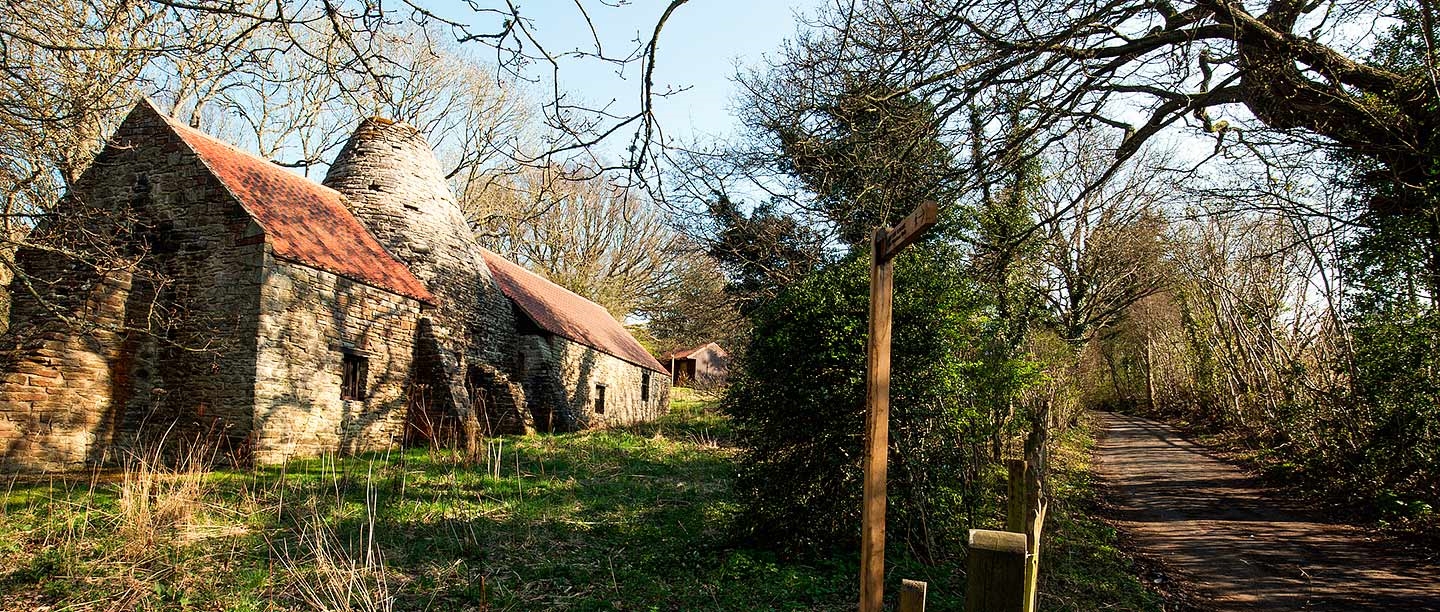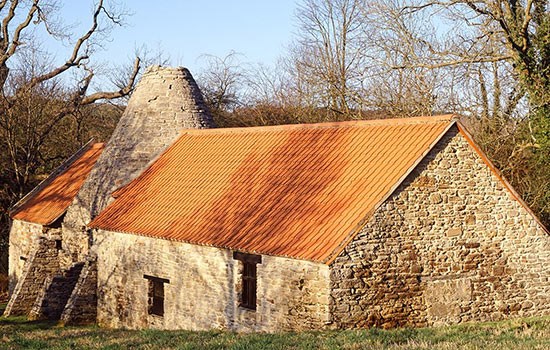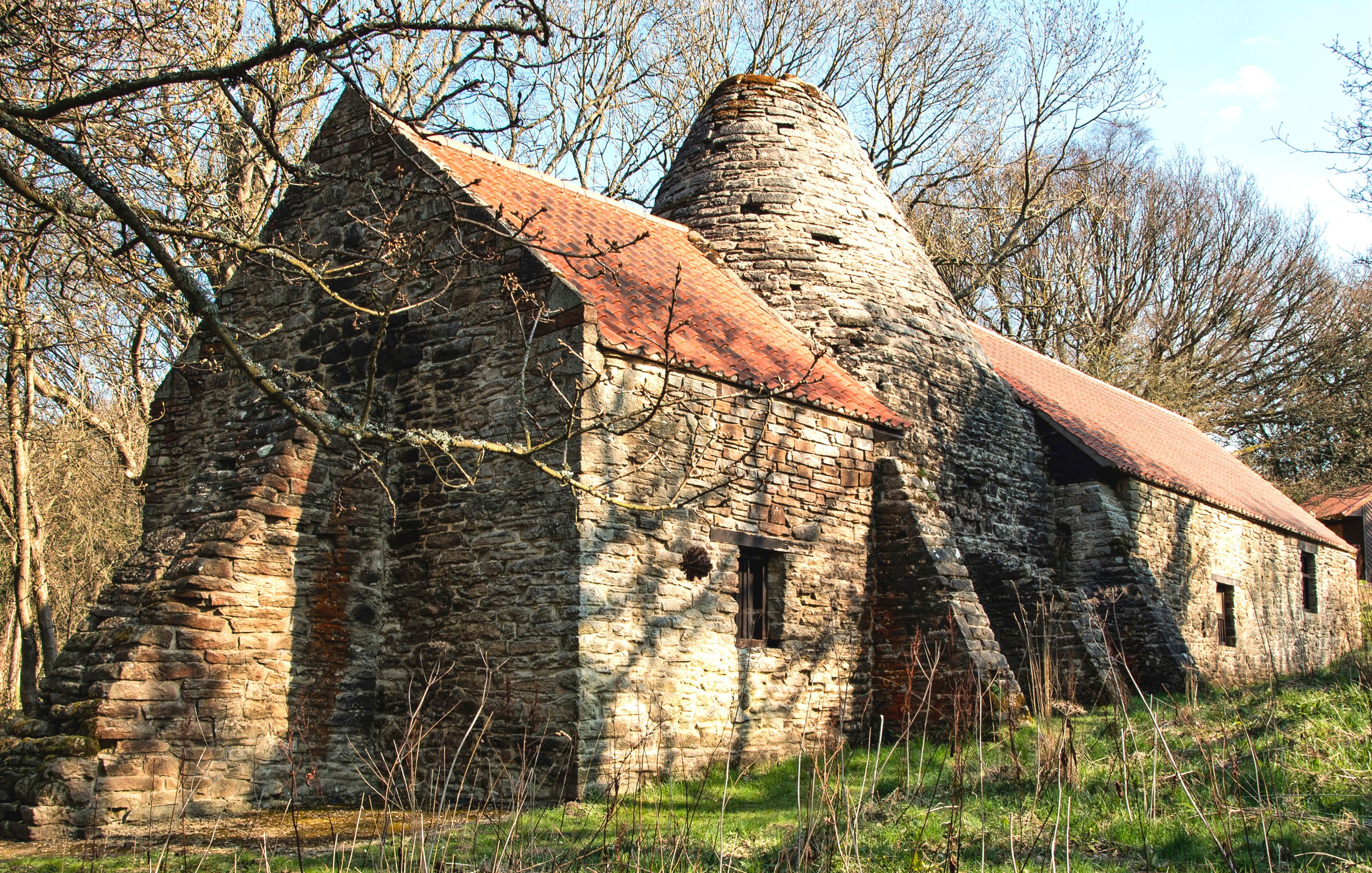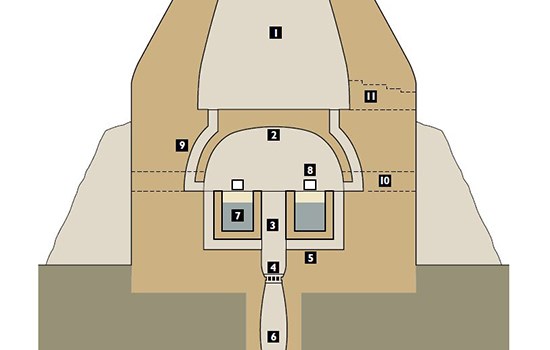The Founding of the Furnace
A forge had been established along the banks of the river Derwent by 1719. It converted ‘pig’ iron into malleable wrought iron that could be worked by a blacksmith. In 1753, Derwentcote produced 150 tons of iron for local industrial production, including making fire grates for steam engines and axles for waggons.
By the 1740s, a cementation furnace – which still stands today – was added to the successful site to turn wrought iron into steel. The cementation process produced steel by heating iron with carbon (usually from charcoal) in a furnace. Although the technology was invented in Germany, thanks to its extensive use in north-east England it became known as the English Method from the 18th century.
The furnace relied upon high-quality Swedish bar iron, imported via Newcastle, because impurities in British iron made it unsuitable for making steel.
What is cementation?
Long, flat iron bars were fed into the chamber of the furnace where they were packed into two fixed sandstone chests, alternating with layers of charcoal powder. The chests were sealed from the surrounding air with sand, the furnace openings were shut, and a fire was lit in the grate below. Flames and heat travelled up through flues around the chests and reverberated off the vault of the chamber, before venting through the cone.
The furnace was heated to a temperature of over 1,100°C, the heat at which the carbon from the charcoal diffused into the iron – a process known as carburisation. The heat was maintained for 6–10 days before the furnace was allowed to cool for a week. The bars could then be extracted. Each cycle, or ‘heat’, took around three weeks in total.
Each cycle produced 10 tons of ‘blister’ steel – so called because of the distinctive pockets on its surface, which were caused by impurities in the iron reacting with the carbon.
An artist’s impression of Derwentcote in the 1860s. The furnace (1) is in the foreground. A dam upsteam on the river Derwent (2) supplied a system of water channels that fed a large millpond (3), held by a dam (4). From there a sluice controlled the flow to a waterwheel that powered the machinery of the forge (5). A row of cottages (6) was built at the end of the 18th century for the community, and beside the forge were ancillary buildings (7) whose function remains unknown.
© Historic England/English Heritage Trust (illustration by Martin Moss)
Newcastle steel
Just two workers – a steelmaker and an apprentice – were required for the work, loading and unloading 10 tons of metal, and constantly stoking the fire. They could produce 100–200 tons of steel each year.
The blister steel was brittle and therefore unusable without further working at the nearby forge. Since the carbon diffused into the iron in different quantities, low grades would be worked into springs and cheaper cutlery, and the higher grades into high-quality ‘shear’ steel. Shear steel was in high demand to make sharp, cutting blades for shears, scythes and other cutting implements.
The steel makers of the Derwent Valley were famous for their shear steel. Collectively their steel was known as ‘Newcastle steel’ and its quality made it highly sought after.
The ‘end’ and rediscovery
The forge and cementation furnace closed between 1875 and 1891, partly because new techniques of steel production had been developed by then, and also probably because Derwentcote couldn’t compete with the superior transport networks and production capacity of the Sheffield steel industry further south.
In 1985 the cementation furnace was placed in English Heritage guardianship. English Heritage then began a programme of research, consolidation and repair, and after the surrounding woodland was also placed in guardianship the site opened to the public in 1991.
More recently, archaeological investigations have deepened our knowledge of the structures around the area of the forge, including the excavation of the cottages belonging to the workers and their families.





